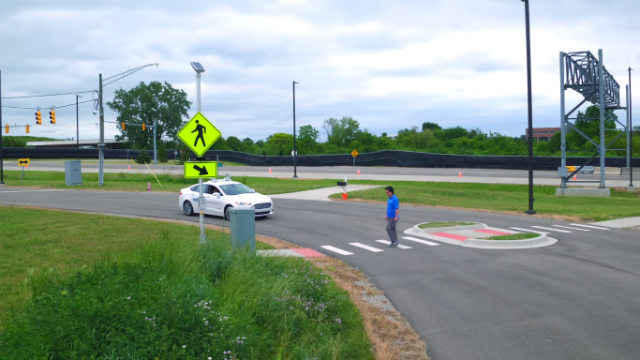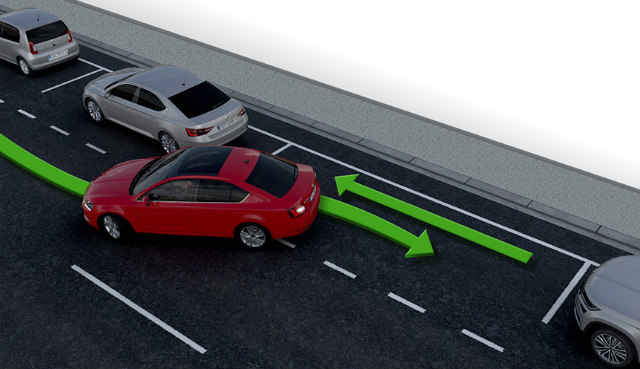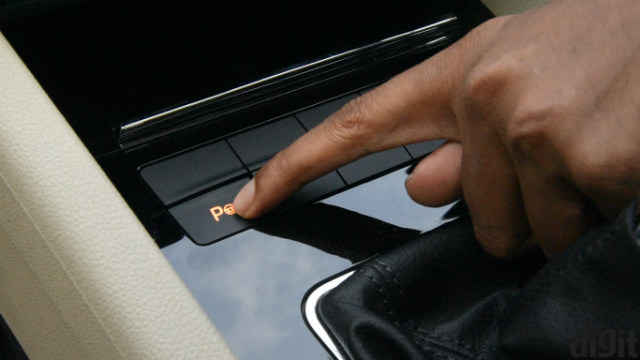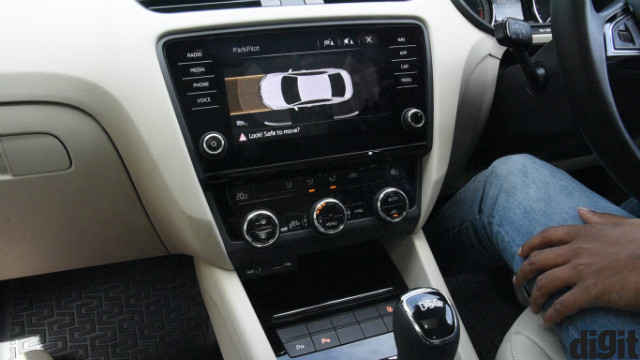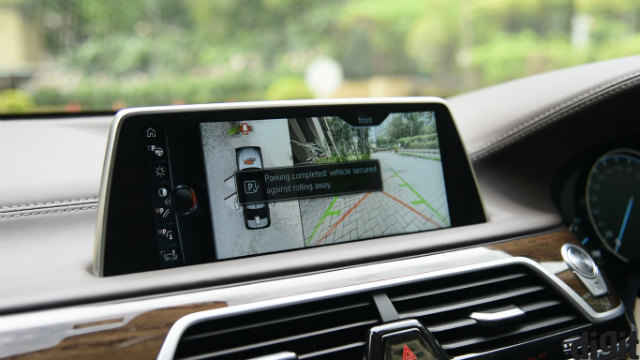Do automatic parking systems really work?
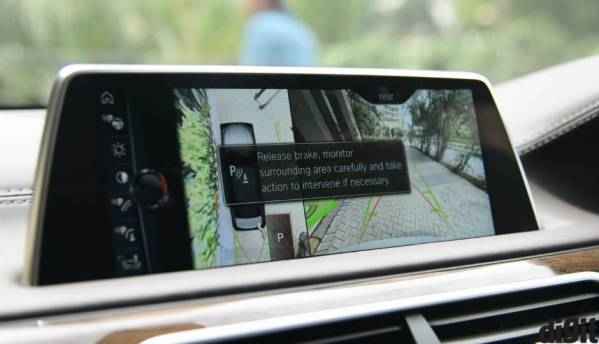
Are you using them right, or are your human-like expectations out of a car leading you to label automatic parking systems as "useless"?
Autonomous vehicles are by far the biggest keyword to have ruled the auto industry since ages. With each passing day, we are actively experimenting with more participation of machines and artificial intelligence in our daily lives. With such experiments, some technologies have already made it to production vehicles over the last few years, and is now tending to break the levee and flood popular, mass market cars.
Automatic parking, ever since its inception, has been looked upon as more gimmicky than fruitful by many. The initial systems were often blamed of being inconsistent, and while the technology has indeed evolved, the fact of the matter is that you will not miss it when you do not have it. Take the 2017 Skoda Octavia, for instance – the new D-segment sedan has automatic parallel and perpendicular parking maneuvres to help you park in tight spot. However, I was not entirely surprised when a tech-savvy friend of mine sat tapping, long-tapping and re-tapping the parking buttons, inching forward and backward, switching on indicators and even honking in desperation to make the automatic parking system work. Needless to say, he eventually gave up after the car detected a completely deserted stretch of the parking area as the right parking slot and stalled itself there.
In 2003, the Toyota Prius hybrid became the first commercial car to include automatic parallel parking in itself, and the technology has really caught on since then to become a de facto inclusion at least in luxury cars. The technology essentially includes a microcontroller board inside along with algorithms, which take in the data supplied by the sensors and cameras placed around the car to gauge a space, compute whether it would suffice for the car, and take autonomous control of the steering wheel to park it into the chosen slot. This process of handsfree parking was then improved upon by adding brakes and gear switch controls also to the car, upon which all that a driver really needed to do was switch on the parking mode, let the car identify the parking slot of his/her choice, and sit back until the car comfortably parks itself. Such a system is available in production today, albeit in premium cars like the new BMW 7 series.
But, the question lies – do these parking systems really work? How good are they, in everyday applications? Can they truly add value? Are they a worthy precedent for autonomy and artificial intelligence in cars? After having exhaustively driven cars from four different carmakers employing automatic parking systems, here's what I found.
Do they work?
Well, yes…and no. In the literal sense of the term, the autonomous parking systems certainly work. What becomes important to figure out is whether it actually works enough to add value, and how differently they work in different cars. Beginning with a 2016 Land Rover Discovery Sport, you can literally enable the automatic parking modes from anywhere – even while standing in the middle of a crowded road. It also happened to be the very first time that I tried making the SUV park itself, and to my pleasant surprise, it found the exact, tight, parallel spot to the side of the road, and steered me into it – no harm done to the cars around. All I had to do was switch between 'Drive' and 'Reverse' when prompted the multifunction instrument cluster display, and release the brakes really carefully.
While that drastically impressed me and minimised the efforts, the second attempt at parking the car went haywire. Now at an almost deserted basement parking slot of my apartment, the car failed to gauge any parking area, and when it did, it somehow drove me into a pillar right in front of me. It may not matter in an empty parking area, as humans should be able to park their own cars where the parking process is at its easiest. But, even in tight traffic spots, the SUV was not consistent in terms of the park assist processes.
The same pattern was retained by the 2017 Jaguar XE – unsurprising, since Jaguar and Land Rover share the same technology in their entry segment cars. Moving on to the next car that I drove with automatic parking enabled – the Skoda Octavia. This is where the process was both complicated and simple at the same time – to make the Octavia park, your car's rear end must be in line with the corresponding parked car's rear end, and the parallel/perpendicular space must not have light obstacles like bushes. The simple bit was that all it required was for me to stop the car, switch the indicator on and get a swift response from the car, and it successfully recognised parking spaces almost 90 percent of the time.
The last, and latest one was the 2017 BMW 740Li. This one is truly automatic, and not handsfree. As soon as you switch on the camera system, the car starts trying to detect space that is enough for the car's long wheelbase. Once it does, it simply prompts you to hand control over to the car, and it parks itself. You can override the system by applying manual brakes, but by itself, it does an absolutely neat job. Looking at the money that you pay, you would expect additional wizardry, wouldn't you? This did determine for me that at some level or the other, the automatic parking systems do work, indeed.
How good are they?
This, is the single-most important discussion here. While they indeed work, what remains questionnable is exactly how good they really are. Most of these systems, once enabled, tend to work alright, but in spurts. It is still a hit and miss for the most part, where even after I placed my car perfectly for perpendicular parking, it would either fail to recognise the same parking spot two times in a row. It also happens that the car fails to gauge whether the space to the side can be used for parallel or perpendicular park and does the opposite of what is intended, and in other isolated incidents, I even had the automatic system park the vehicle in a completely off-mark trajectory, almost bump in to other cars around, or even a pillar. Such occurrences were common among all the four cars.
It is this that raises the question that even the most sophisticated automatic parking systems are not the most intelligent or adept. The BMW parking maneuvre is completely autonomous, but for at least six times out of a possible 10, the car failed to detect any parking spot despite every effort possible. The most reliable, among these four that I used to experiment with, happened to be the Skoda Octavia. The reliability here is based out of the number of times the car detected parking spaces, the number of times it detected the correct ones, the efficiency of the parking system, and whether any damage was incurred to any surrounding object while parking.
The Skoda Octavia is followed by the Jaguar XE in reliability, and the BMW 740Li is the least proficient in successfully detecting parking spaces. Another factor that I considered is how actually helpful these systems were – for the most part, I was too aware of whether the car was managing to park itself alright, or of obstacles, and it would have simply been easier to park it manually anyway. It is here that the autonomous parking system in the BMW 740Li makes more sense – the long wheelbase and fatter body of the car means it is more difficult to park, and this is where the autonomous system helps. Also, it is to be noted that once the system detected a spot it always parked correctly, and that really aids the driver here. As for the other cars, it was often easier to park manually, even in tighter spots.
A precedent for autonomous cars
While automatic parking is nothing new, it still serves as a good precedent for on-road autonomous cars that are expected as early as by 2020. While the technology does make people get more acquainted with advanced technology and begin trusting the on-board computers, the real value addition is minimal as of now. Even if your car does come with automatic parking, chances are slim that you'll make a habit of using it wherever you go. Maybe, parking at home would become a habit, and the systems are expected to improve with regular deployment, but right now, it is only an added gimmicky luxury than something that is truly assistive to the driver. In most cases, you are exceedingly paranoid – watching the corners around the car, carefully releasing the brakes and frantically following the MFD inside the car.
While the very first (Level 2 and 3) autonomous cars are expected soon enough, the first ones may also have a similar end effect. Adaptive cruise control, in the Indian driving climate, would be a once-a-month application that you would enable to show off to your friend how cool your car is. The true driver assistance features – slow speed autonomous crawl, intelligent obstruction detection and autonomous braking, and live autonomous route calculation based on cloud data, will still take quite some time to come through.
Until then, we at least expect car and technology developers to improve the proficiency of these parking systems.

